- AUDIO ONE-TO-ONE Call Now: 210-805-9927
- Contact
- Register
- My Account
SoundBites Winter 2015

Winter 2015
Back from the CES with a notebook crammed full of information on the latest, hottest goodies in the world of high-end audio.
Just what you’ve been waiting for! Put another log on the fire, kick up your feet and read on!
ROGUE AUDIO: We’ve admired the Rogue products for years and finally decided it was time to add them to our lineup of quality offerings. Established in 1996, Rogue Audio has a well-earned reputation for quality and performance. Their products have received rave reviews and awards from the audio press worldwide. We especially appreciate the fact that 100% of their products are proudly crafted right here in the USA.
Rogue offers a wide variety of full tube and tube hybrid electronics. From cost effective integrated amplifiers, starting at just $1295, to their flagship Apollo monoblock tube amplifiers at $11k, Rogue likely has a product to satisfy most any audiophile need and budget.
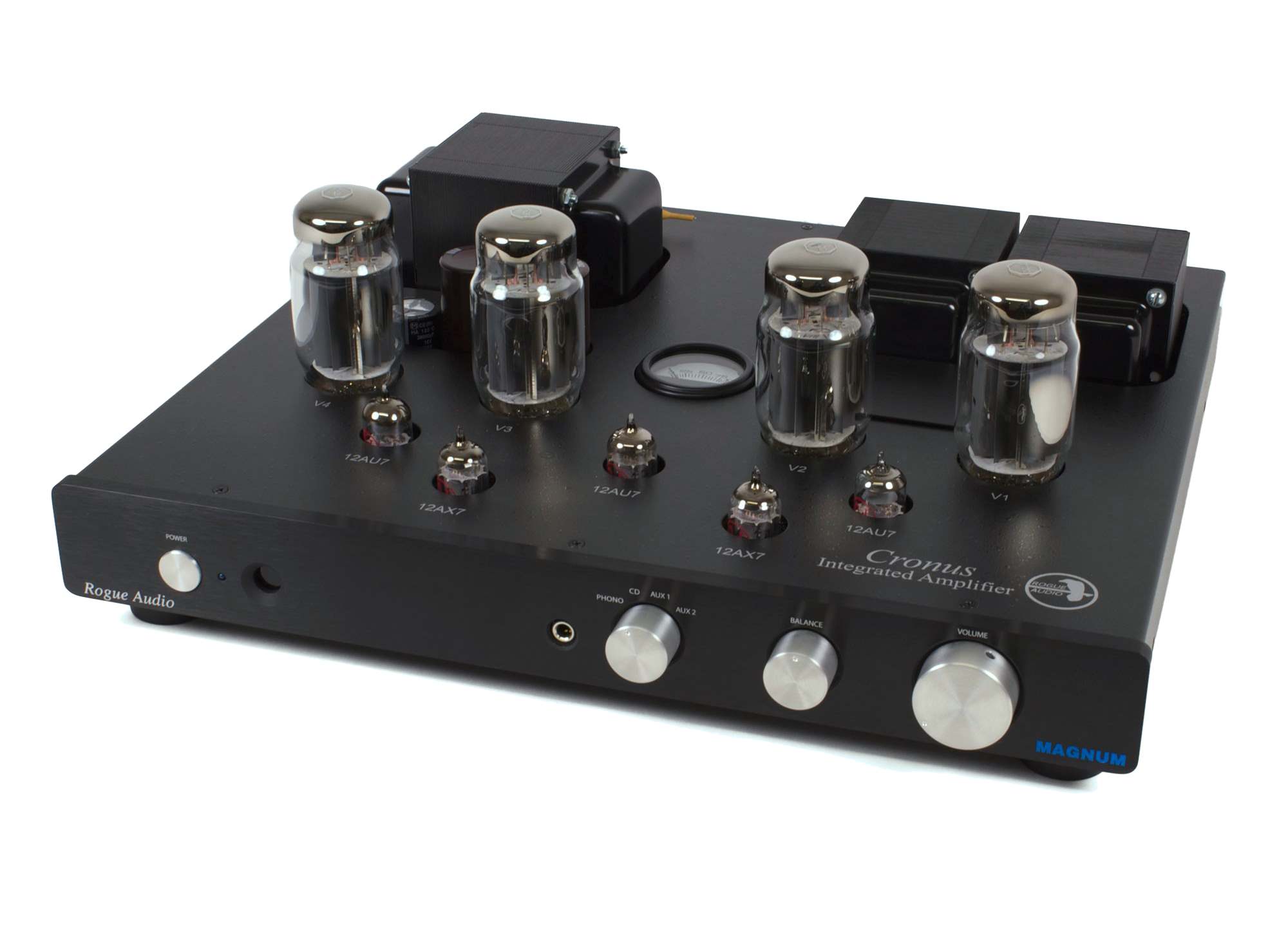
|
Rogue Audio Cronus Magnum Integrated |
Build quality is first rate. I was immediately impressed with the construction quality and fit and finish from the moment I opened the box - the photos don’t do justice to the products.
Internally you’ll find a neat and tidy layout with wire looms properly dressed, high quality boards and component parts. Analog fans will appreciate the fact that all three integrated amp models include a phono input for MM cartridges.
At the show Rogue debuted their new RP-5 preamp. Priced at $3495, the new model features a host of line inputs and a phono input that offers both MM and MC capabilities, along with internally adjustable loading. Also planned are models above and below the RP-5. The entry-level RP-3 is in the works that will be priced at $2500 and the top of the range RP-7 fully balanced model will debut later in the year.
Our first Rogue samples arrived just prior to my leaving for CES and are still breaking in, so I can’t yet offer and in-depth review. That said, I’ve heard enough to know this will be a popular line!
AURENDER: Aurender debuted several exciting new products at CES. For those of you who prefer to use a NAS drive rather than local storage, two new streamers have been added to the line. The N100 compliments the X100 Series music servers (with similar form factor and cosmetics). The N10 Network Music Player is their flagship and offers the same level of sophistication, performance and design found in the W20 Music Server.
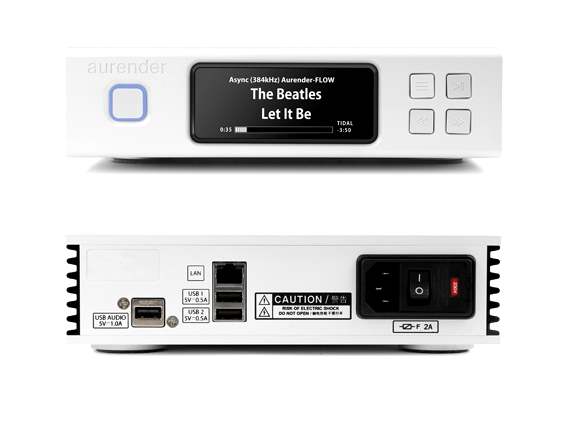
Aurender N100
What makes these products unique, other than the superb design and build quality found in all Aurender products, is their caching strategy. Like the Aurender music servers, the N100 and N10 employ an internal Solid State Hard Drive (SSD) allowing for cached playback of incoming signals for improved performance. Both units employ full linear power supplies and are housed in machined aluminum enclosures. N100 - $2495. Pricing for the N10 has not been announced.
The Aurender X725 is an all in one DAC, preamplifier and amplifier designed to partner any of the Aurender music servers (or streamers) for a simple, high resolution audio system – just add speakers! Digital input (via USB or TOSLINK) is converted to analog by a high resolution 24/192 - DSD128 DAC. The preamplifier section then controls volume and source selection, and the powerful 230 watts (into 4 Ohms) amplifier drives the speakers; And the outstanding Aurender iPad or Android app controls all!
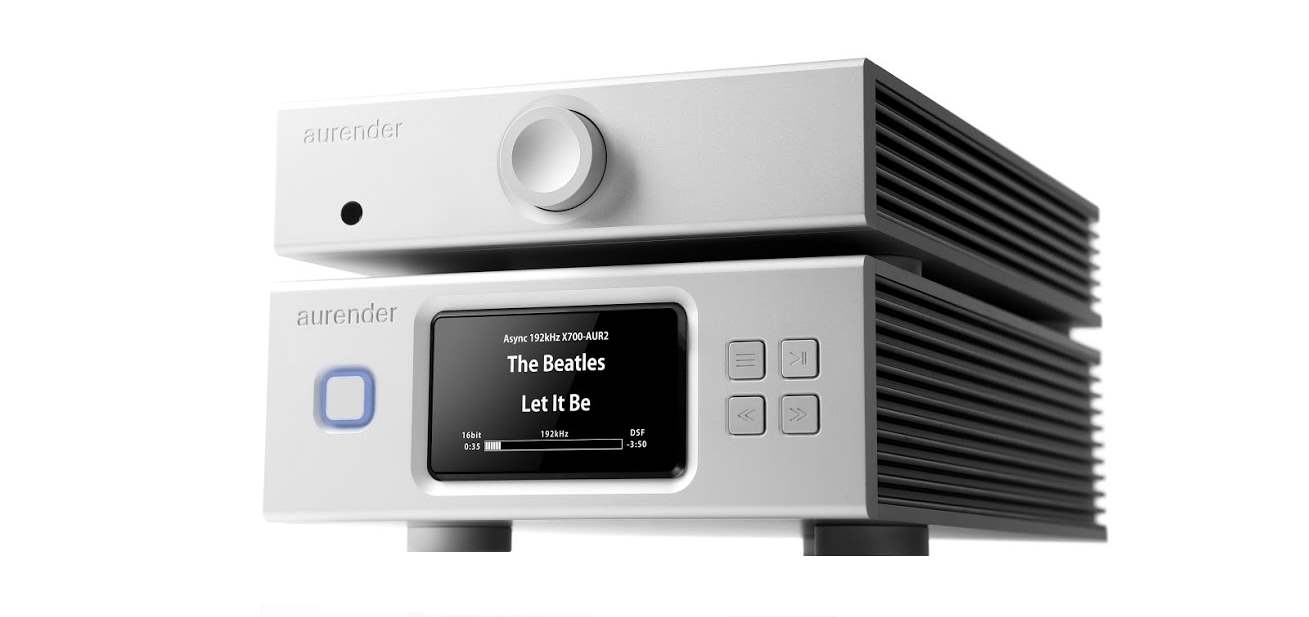
Aurender X-PAC - X725 Amplifier and X100
The X725 is a lovely, compact module with dimensions and aesthetic design to match either the X100 Server or N100 Network Player and can be stacked for an ultra compact, stunningly good digital music system. Now, with the addition of the TIDAL access through the Aurender app, you can have CD quality streaming as well. X725 - $2495 (X100S pictured under the X725 below is $2995).

Winter 2015
GOLDEN EAR: I can’t think of another company that has received as many wildly enthusiastic reviews as Golden Ear Tecnology. Find a review on any Golden Ear speaker, in any publication or online webzine, and you’ll read an unabashed, over the moon commentary. Indeed, designer Sandy Gross has delivered a range of speakers that offer incredible performance and almost unimaginable value. The newest member of the family, the Triton Five, was unveiled at CES 2015.
If you’ve heard the Triton Seven (a favorite of mine), you’ll love the Triton Five (think T7 on steroids). Like the Triton Seven, the Triton Five is passive design (no powered subwoofer as seen in the T2, T3 and T1). It employs the same D’Apolito driver arrangement found across the line, but larger 6” cast basket, long throw woofers flank the excellent High Velocity Folded Ribbon tweeter. Four 8” planar sub radiators occupy the lower sides of the enclosure to extend bass to an impressive 26Hz! Efficiency is rated at an easy to drive 90dB (can’t wait to try tubes on these babies!).
Part of what sets apart the Triton Five from its little brother is the new balanced crossover technology developed for the Company’s flagship, the Triton One.
I spent a fair amount of time in the Golden Ear suite listening to a broad range of material and was quite impressed. Great tonal balance, extension, dynamics and imaging, the Triton Five rocks! Oh yes, forgot to mention the price - $995 each… a STEAL!
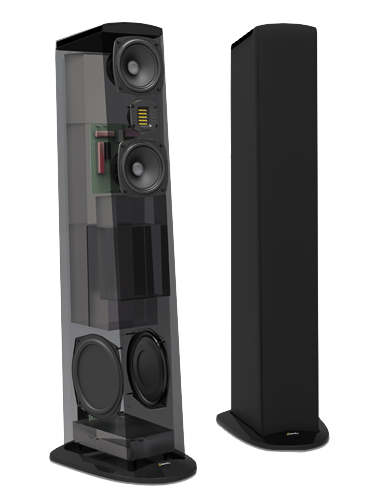
|
Golden Ear Triton Five Speakers |
Golden Ear also introduced a new super-subwoofer, the SuperSub XXL. Some of the design philosophies are unique. In particular, the inertially-balanced sub bass radiator technology. Intended to eliminate harmful cabinet resonance and spurious vibration of the enclosure, the system utilizes a (patent pending) combination of two inertially-balanced 12" long-throw active drivers mounted horizontally plane and two similarly balanced planar infrasonic passive radiators on top and bottom. This force-canceling inertial balancing preserves and focuses all the energy produced by the transducers into moving air, rather than vibrating the enclosure. To prove their point, a nickel was balanced on the enclosure during a very bombastic the demo and did not move.
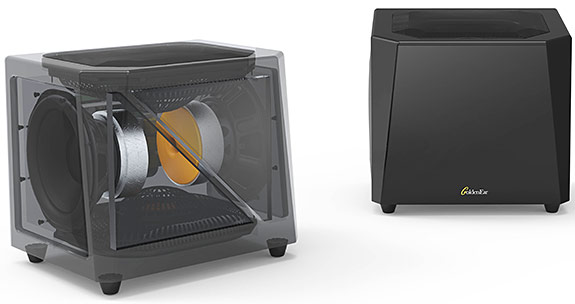
Golden Ear Super Sub XXL
The SuperSub XXL is driven by an internal 1600 Watt Class D digital amplifier, providing massive power for iron-fisted driver control and lightning-fast transient response. Dimensions are 18.875 x 15.75 x 15.25 (WxHxD) and the frequency response is from 10 Hz to 200 Hz. The low pass filter is @ 12dB per octave continuously variable from 40 Hz to 200 Hz. Price is $1995
ORTOFON: Shown at CES 2015 for the first time was the special edition A95 MC cartridge, so named in celebration of Ortofon’s 95 year history. If you remember the popular A90, the A95 picks up where that design left off. The A95 has taken those design concepts to the next level by reducing unwanted vibrations and increasing the dynamic capabilities.
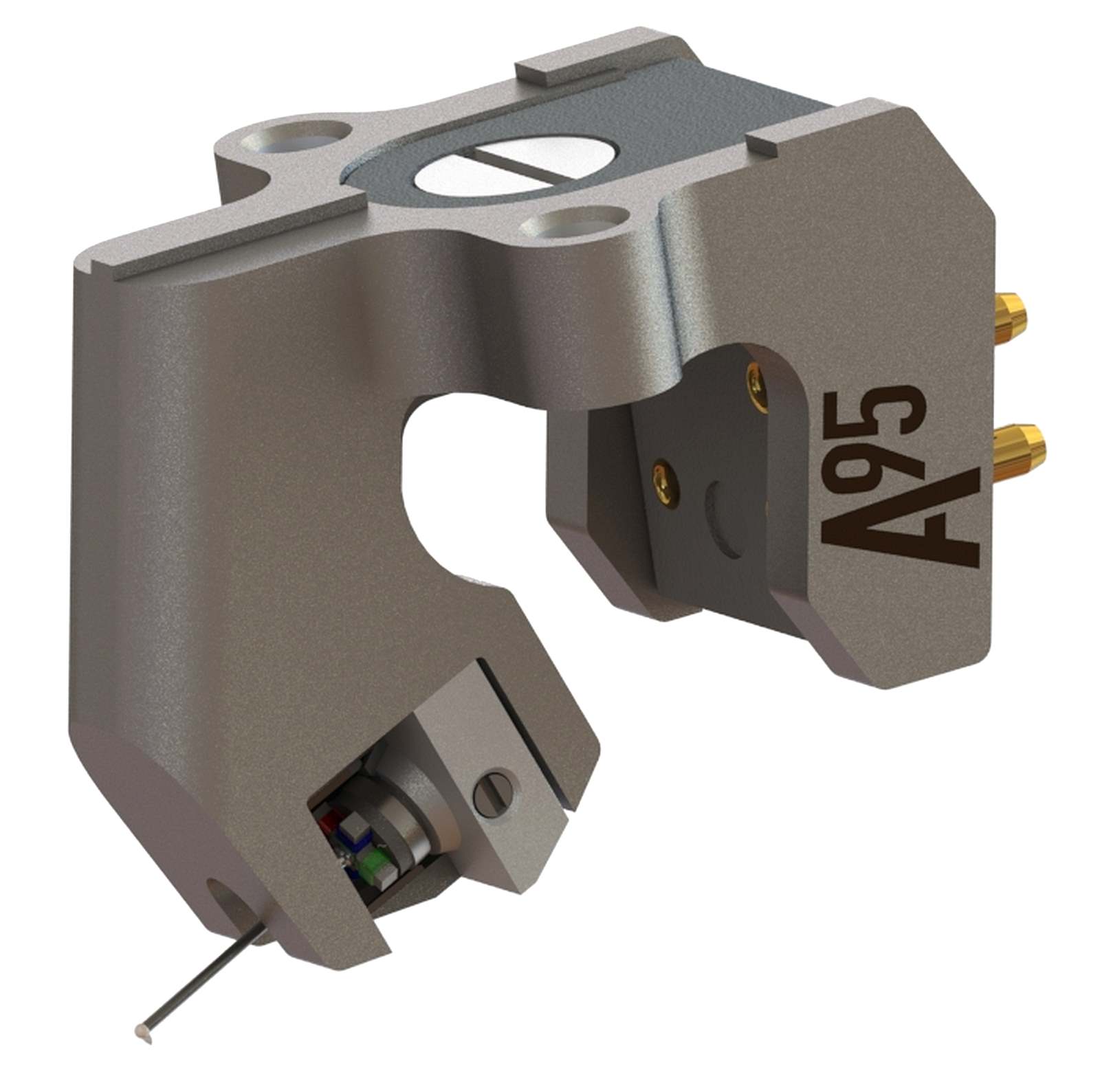
Ortofon A95
The shape of the A95 mirrors that of its predecessor but now is made from titanium utilizing the same Selective Laser Melting (SLM) process that bonds tiny particles of metal into an extremely strong, lightweight structure.
Listening to the A95 was a study in clarity. The one word that comes to mind is clean – not hint of grain and uber transparent. If you like detail, you’ll absolutely love the A95. $6499
We’ve really been enjoying the new Quintet line up of low output moving coils from Ortofon. Consisting of five models, the prices range from a modest $314 up to $999 These cartridges offer a lot of performance for the money. Each model (Red, Mono, Blue, Bronze and Black) offers great performance in their respective price range. We’ve mounted a number of the Quintet Blue cartridges ($524) and been very impressed with its even-handed tonality and overall resolution. For more detail and refinement, move up in the line to the Quintet Black at $999.
In his review of the Quintet Black for The Absolute Sound, Neil Gader writes: “Still, at the end of the day perhaps the greatest tribute I can pay the Quintet Black is that I haven’t felt the urge to quickly return to one of my pricey reference cartridges. I don’t need to tell you that for this analog junkie, that’s really saying something.”
WIREWORLD: Stopping to see our friends at Wireworld I learned of a unique cable test carried out by Germany’s Stereoplay Magazine. It’s an interesting read and you should download the PDF from the link below. You can also download a sound file that allows you hear each of the cables in the test versus a straight, direct connection. I mention the test here because the Wireworld Eclipse 7 was the most highly rated cable in the survey of 14 cables. The review: Tinyurl.com/q7t2y2n The Hi-Res sound file: tinurl.com/npwbw8n
Making their debut were the The Nano Series cables. The ultra lightweight and highly flexible cables have been designed for headphone and portable audio applications. All four Nano cables employ the Company’s patented DNA Helix design and proprietary Composilex 2 insulation.
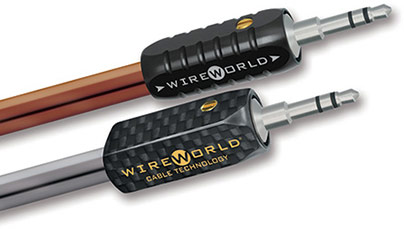
Wireworld Nano Eclipse and Platinum Eclipse
Featuring carbon fiber connector housings, DNA Helix geometry and Ohno Continuous Cast solid silver conductors, the Nano-Platinum Eclipse tops the range at $500 for a 1.5M. The Nano-Silver Eclipse features OCC silver-clad copper conductors and is priced at $220 for 1.5M. The Nano-Eclipse employs OCC copper conductors and goes for $160 in 1.5M and the popular-priced Pulse is just $40 for the same length.
Wireworld has announced its entry into the network cable segment. The soon to be released Starlight CAT7a Ethernet cable for high speed media network applications utilizes a new internal structure to provide a claimed higher transmission speed. The internal geometry provides greater separation between the four conductor pairs for lower crosstalk, which allows higher transmission speeds. The cable also employs Wireworld’s proprietary Composilex 2 insulation to minimize triboelectrioc noise. Factory-terminated Starlight 7a cables will feature state of the art Z-Max RJ45 plugs by Siemon Corporation, a world leader in multi-gigabit network cable technology.
With the advent and popularity of NAS-based systems, this category has become important. Like any other digital cable, the Ethernet cable connection between the NAS and music streamer is critical. Audioquest has dominated the segment so it will be very interesting to see what “Cable Wizard” David Salz at Wireworld cooks up!

Winter 2015
YG ACOUSTICS: As most of you know, we’re big fans of YG speakers. Each and every model offers a most unique combination of exceptional resolution, superbly balanced tonal presentation and the ability to convey the soul and emotion of music that is absolutely captivating. YG speakers are the speakers I would take with me to that mythical desert island. Their entry-level model, the Carmel, is real sweetheart. Performing far beyond what would be expected from such a diminutive system, the Carmel is an overachiever. As good as it is the Carmel is one of the more senior members in the line. Since its inception, designer Yoav Geva has invested many countless hours of research and development that has been pored into new models. It was time the Carmel should benefit from those advancements, and thus was born the Carmel 2.
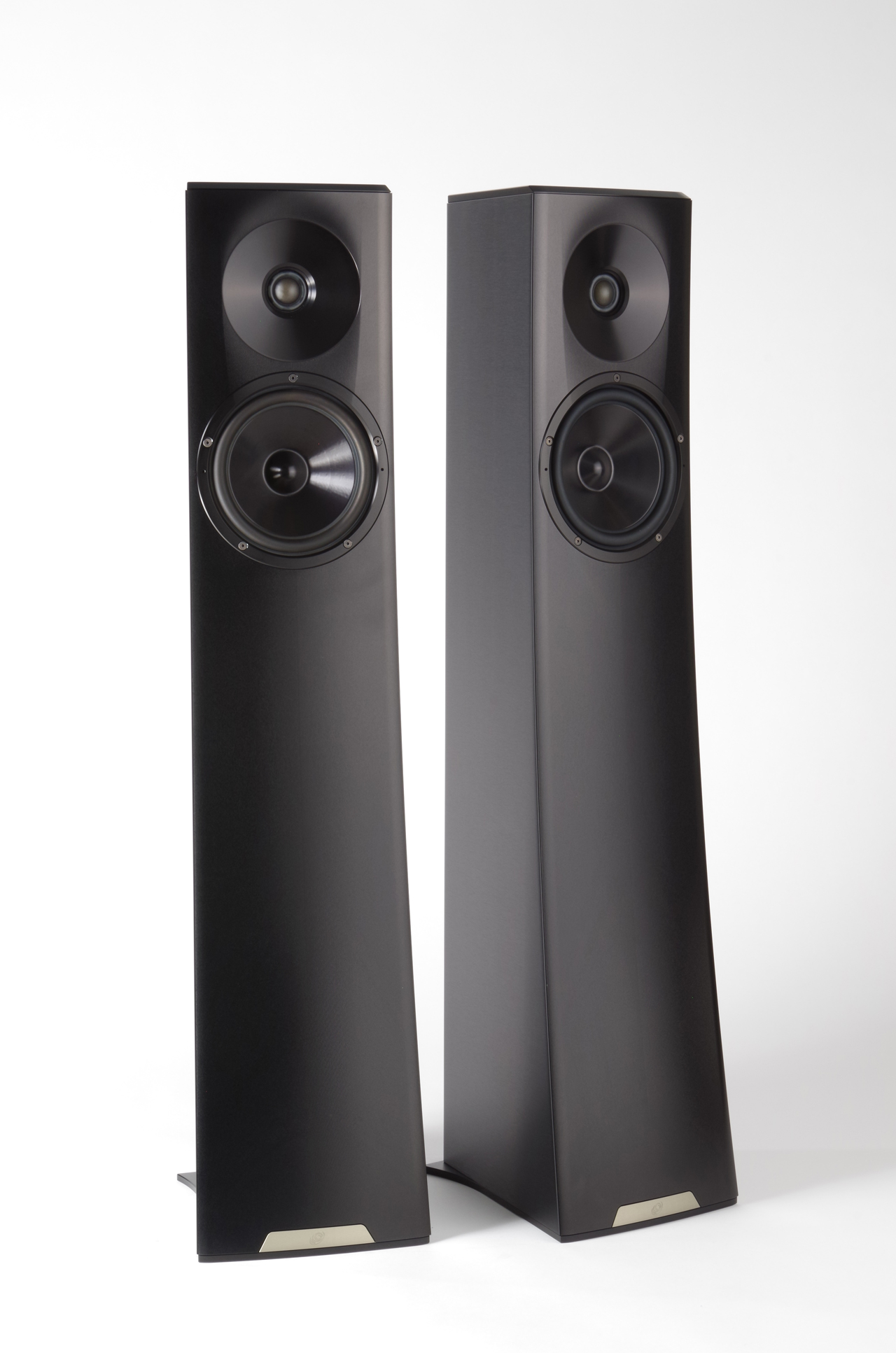
|
YG Acoustics Carmel 2 |
Externally the Carmel 2 echoes the more curvilinear cabinet profile that graces the Sonja and Hailey. Internally the advancements include proprietary BilletCore technology (where a driver cone is hewn from a solid block of aluminum by an exotic five-axis CNC mill into a super strong and incredibly lightweight structure), ToroAir, CNC-wound air core inductors, FucusedElimination anti resonance enclosure design and the company’s own DualCoherent crossover design that simultaneously optimizes both frequency and phase linearity.
Since I’ve yet to experience the Carmel 2 in my system, I’ll quote a bit of the recent review by Kirk Midtskog (who visited the factory for a comparison of he Carmel 1 and 2), published in the Absolute Sound. I invite you to read the entirety of his excellent piece.
“Priced at $24,300, a not insignificant increase over the $18,000 Carmel 1, the Carmel 2 now brings some of the same technology from YG's much larger Hailey and Sonja models to the smaller model. (Hailey 1.2 is priced at $42,800 and Sonja is priced at 72,800-$106,800, depending on configuration.) The Carmel 2 has the same YG tweeter used in the Sonja and the same YG 7.25” midbass driver used in the Hailey. Senior Account Executive, Kerry St. James, patiently demonstrated the Carmel 1 followed shortly thereafter by the Carmel 2 so I could hear both versions with the same electronics and music selections—most of which were my own audition tracks. (St. James also demonstrated the Hailey 1.2 and Sonja 1.2 models in the same fashion on the same day.) Now, I have heard some Mark II upgrade models, which were clearly worthwhile, but whose sonic performance increase could fairly be characterized as incremental. The Carmel 2 is not such a case; it sounds more like a whole new model with a dramatic performance jump in all regards. Only the basic cabinet size and its two-way driver configuration remain the same; everything else is new.
“The sonic results are impressive. From the midbass on up, the $24,300 Carmel 2 sounds more similar to the $42,800 Hailey 1.2, in terms of overall resolution, than it does to the Carmel 1. Yes, the much larger, 3-way Hailey is a better performing speaker on the whole—as well it should be (it's dynamically more robust, has greater weight and bass extension, and comes across as more complete from top to bottom), but the Carmel 2's reproduction of detail, dynamic coherence, and soundstage openness—within the two speakers' overlapping frequency range—come closer to the Hailey's performance than I expected. The new YG drivers and crossover really do make a substantial difference. The sonic “family resemblance” between the two models is now more apparent.
“Comparing the Carmel 1 to the Carmel 2, I found the Carmel 1 to be a commendably detailed and engaging speaker with notable bass extension for its size, but the new Carmel 2 is considerably more revealing, dynamically vivid, and has even deeper reaching bass. (The published -3dB level of the Carmel 1 is 35Hz; the Carmel 2, 32Hz, and those figures are plausible, by the way.) The Carmel 2 simply sounds clearer and more musically “alive.” The $6,300 price increase over the Carmel 1 is substantial, but considering the higher cost of the YG drivers and other design features, and, more importantly, the rather dramatic jump in overall performance; the Carmel 2's price increase does not strike me as a steep up charge for merely a step or two uptick in performance.” – Kirk Midtskog, The Absolute Sound. We understand that current Carmel 1 owners will be able to have the new drivers and crossovers installed at the factory (converting to the new enclosure is not possible), price yet to be determined.

CHORD: Chord Electronics debuted the Hugo TT, an upscale version of the popular Hugo but designed for static applications. Where the Hugo was always intended as a portable device, many listeners were so impressed with its performance that it was often purchased exclusively for home use and never left the house. The Hugo performs fine in that scenario, but the design factors employed to optimize portability made use in a home-based system a bit inconvenient.
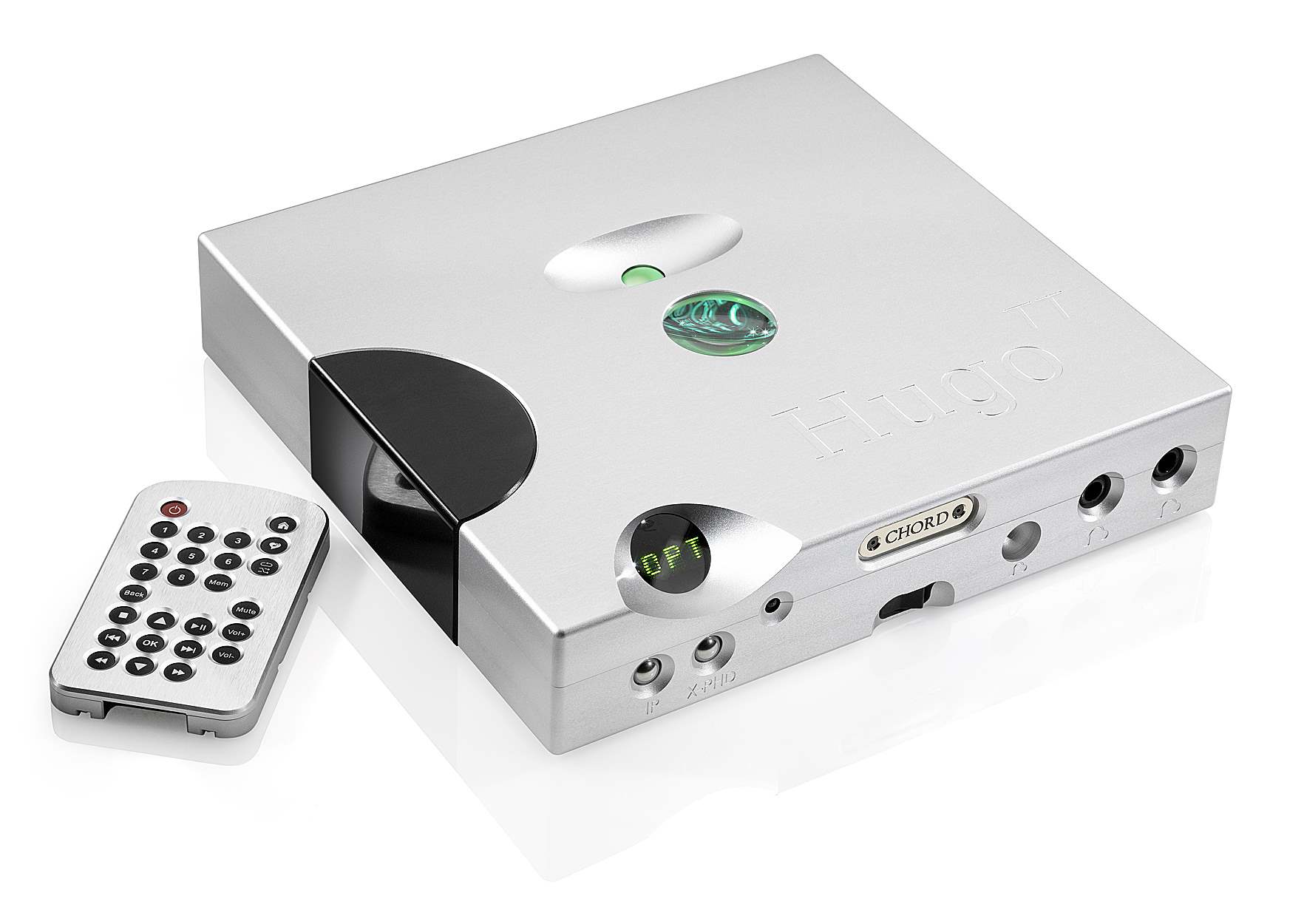
Chord Hugo TT
The Hugo TT (for table top) gains a new larger enclosure, remote control, an alphanumeric LED display with input/sample rate data, and improved sonic performance thanks to supercapacitors. The Hugo TT supports up to 32-bit/384kHz audio via coax and USB, and 24-bit/192kHz over optical, plus DSD64 on all inputs and DSD128 via coax or USB (all via DoP). In a key upgrade over the original Hugo, the Hugo TT benefits from a high-quality asynchronous B-type USB input which covers both the SD and HD USB input stream. With two further digital inputs: a (new) BNC coaxial and optical (TOSLink), any connected component with a digital output can benefit from the Hugo TT’s advanced sound quality.
To fully integrate with today’s digitally stored media, the new Hugo TT also has A2DP Bluetooth capability and uses a custom-made module with the aptX codec to feed a digital signal directly into the DAC circuitry, so even without cables, music can still be enjoyed.
Being a home-orientated device, the Hugo TT has been designed to run continuously from the supplied charger; however Chord’s engineers have also improved the battery and added Supercap energy storage, a technology seen in F1 where supercacitors back-up the car’s batteries by sharing the load and charge demands, thereby protecting them. They serve a similar purpose in the Hugo TT, extending the battery life as well as improving dynamics and demanding transients in recorded music. Anticipated price for the Hugo TT is $4795. Available in both black and silver.
JEFF ROWLAND: Rowland treated us to a sneak peek at a new and exciting upcoming product. The Daemon Super Integrated amplifier represents Rowland’s flagship integrated, offering performance in the extreme. It’s a product for the audiophile not willing to sacrifice power or performance for the convenience and practicality of a one-box solution.
Since introducing the Concentra integrated way back in 1997, Rowland as been advancing the art of the integrated amplifier through five critically acclaimed generations. The Daemon rewrites what can be expected from an integrated amplifier and surely establishes a new benchmark for the genre.
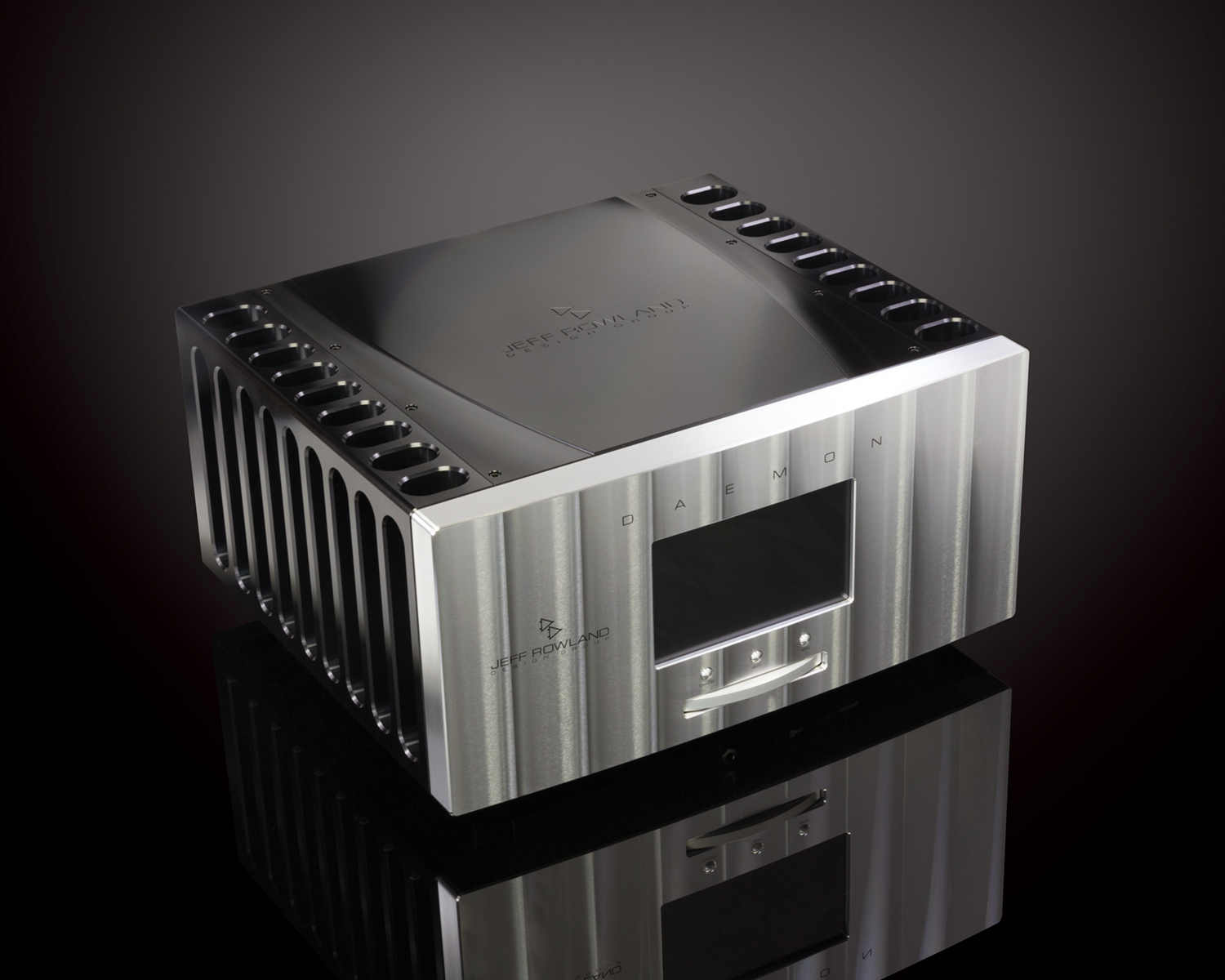
Jeff Rowland Daemon
Producing an eye-popping 1500 watts a side into 8 Ohms and a staggering 2500 watts into 4 Ohms, the Daemon is surely the most powerful integrated amplifier ever developed. With the ability to deliver 30 amps of peak current, there’s enough muscle to handle any speaker on the planet… with ease. I’ll bet that kind of horsepower will give any speaker a sense of taught solidity and dynamic snap like nothing else.
There’s almost no limit to connectivity and flexibility. On tap are 3 single ended RCA and 2 balanced XLR line inputs along with both RCA and XLR preamp outputs. Dual speaker binding posts are provided and headphone devotees will appreciate the isolated headphone amplifier. Maximizing connectivity, the Daemon offers optional DAC (192kHz, DSD capable), MM/MC phono module, HDMI module, WiFi streaming module. Control the Daemon using the 7” x 5” touch screen front panel interface, the hand-held Bluetooth remote control or your smart phone or tablet.
Projected list price for the Daemon is $38k and should be available sometime this spring. Can’t wait!
Also announced, the 625 stereo power amplifier is being updated to more closely equal the sonic abilities of the 725 mono amps. No specific pricing details were available. Also, Rowland is promising the much anticipated power supply upgrade for the Corus preamp and Aeris DAC will soon be a reality!
PARASOUND: Back in the fall we were excited to hear that Parasound was working on an integrated amplifier, so we made a bee line over to their suite for a look see. What we saw was very impressive. The Halo Integrated is an amazingly full featured product that offers an astounding amount of features and flexibility.
According to Parasound the integrated amplifier project began back in 2011 when they set out to re-imagine what a modern integrated amplifier should be, and using their 34 years of experience to craft a killer, bang for the buck product. The goal was an integrated that would be the sonic equal of their Halo separates. Their heralded P5 preamplifier was the basis for the preamp stage with the output section employing the John Curl-designed output stage topology found in the A23 and A21. In addition, the full-featured Halo Integrated employs the latest ESS Sabre 32 Reference DAC for decoding PCM up to 384kHz and native DSD.
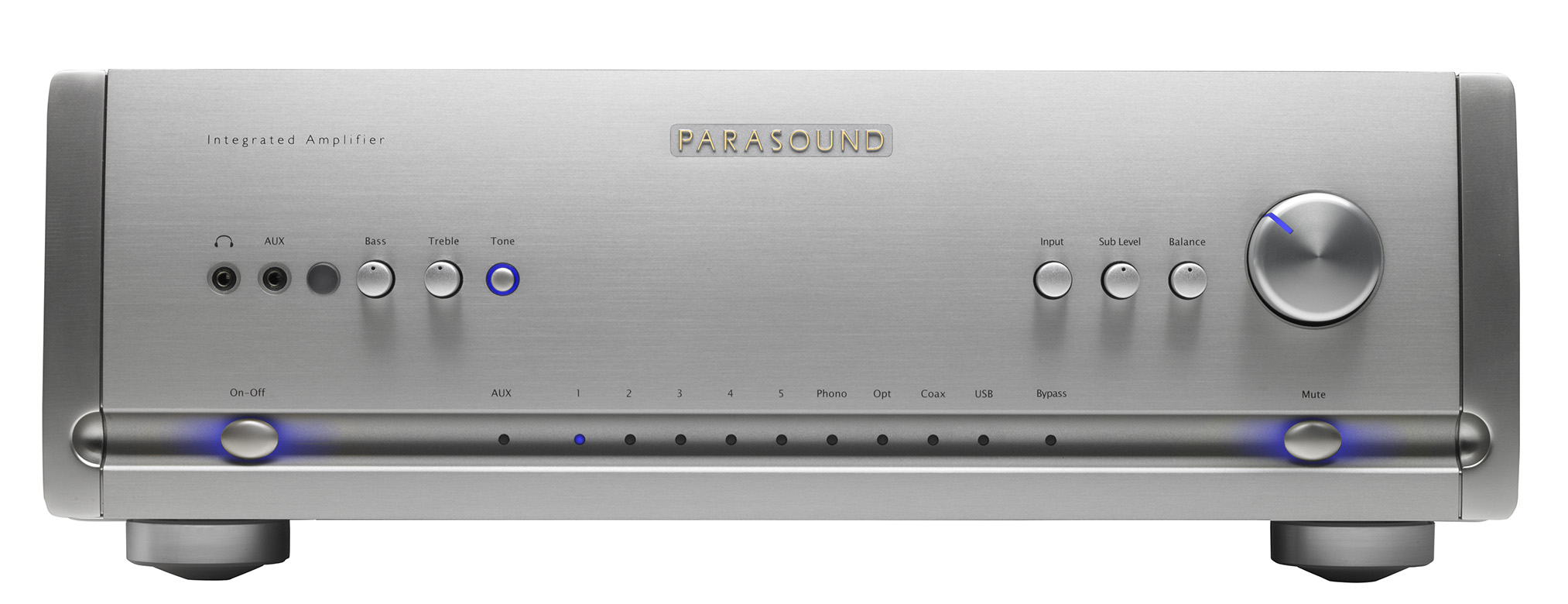
Parasound Halo Integrated
The list of features found on the Halo Integrated is seemingly endless, but a few of the high points include: Five unbalanced analog inputs, one balanced analog input, both balanced and single ended main outputs, a MM/MC phono input, USB, Coax and Optical digital inputs, home theater bypass, stereo subwoofer outputs with adjustable crossover and main preamp outputs with adjustable crossover. The massive power supply is a dual mono design employing a huge shielded toriod power transformer and 40,000mF filter capacitance. The John Curl designed output stage features a matched JFET and MOSFET driver stage utilizing 12 high voltage/high current bipolar output devices in a high bias A/AB configuration. The result is 160 watts per channel at 8 Ohms and 240 per side at 4 Ohms; enough to drive most any speaker with ease.
Okay, so now guess the price. WRONG! It’s $2495… no misprint, just $2.5k!
AUDEZE: Audeze launched their latest design at CES. The hotly anticipated EL-8 becomes the new entry-level model for the brand, priced at only $699 - three hundred Dollars below the LCD-2. The EL-8 is also very light, weighing in at only 460g. The very sleek industrial design was penned by BMW Group Designworks.
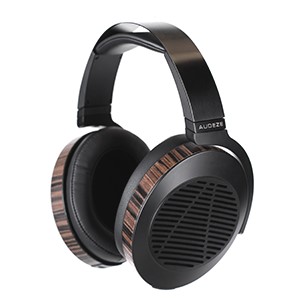
Audeze EL-8
The EL-8 employs several new, Patent-pending, technical advancements in both the magnetic structure and diaphragm technology resulting in improved resolution and lower distortion. Both an open back and closed-back versions of the EL-8 will be offered (at the same price).
I only had a chance for a brief audition (of the open back model) and my initial impressions were quite positive. Without a doubt the EL-8 is an incredible bargain and likely to establish a new benchmark in the price range. We’ll bring them in as soon as they are available and post a full report.
You can check out a video of the new model on the HeadFi You Tube channel here: https://www.youtube.com/watch?v=0VbKHYQj8BU
AUDIOQUEST: Looking for some action in the white hot headphone segment, Audioquest launched their first salvo in the form of the NightHawk. The design employs unique 3D-printed ear cups made from Liquid Wood, a plant-fiber-based material that can be injection molded. It was hard to really hear what these ‘phones could do in the noisy Audioquest suite, but I look forward to a more relaxed audition in the future. $599
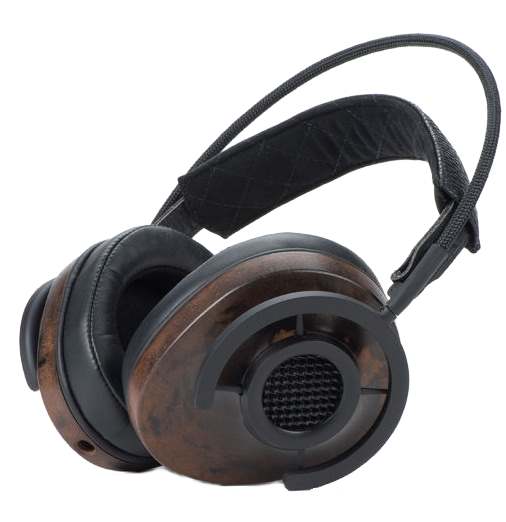
Audioquest Nighthawk

Winter 2015
REGA: On demonstration during CES was Rega’s exemplary RP10 turntable, fitted with the new Apheta 2 low output MC, Ios Reference phono stage and Osiris Reference amplifier.
Following in the footsteps of its revolutionary forefather, the new Apheta 2 brings a new cantilever, generator and body design that builds on the floating cross design of the outgoing model. Rega invested heavily in new manufacturing technology to build the Apheta 2. Ultra-high resolution inspection equipment allows for more precise assembly of the tiny parts and incredibly fine wire being used in the generator. We very much liked the Apheta and are expecting very good things from the Apheta 2.
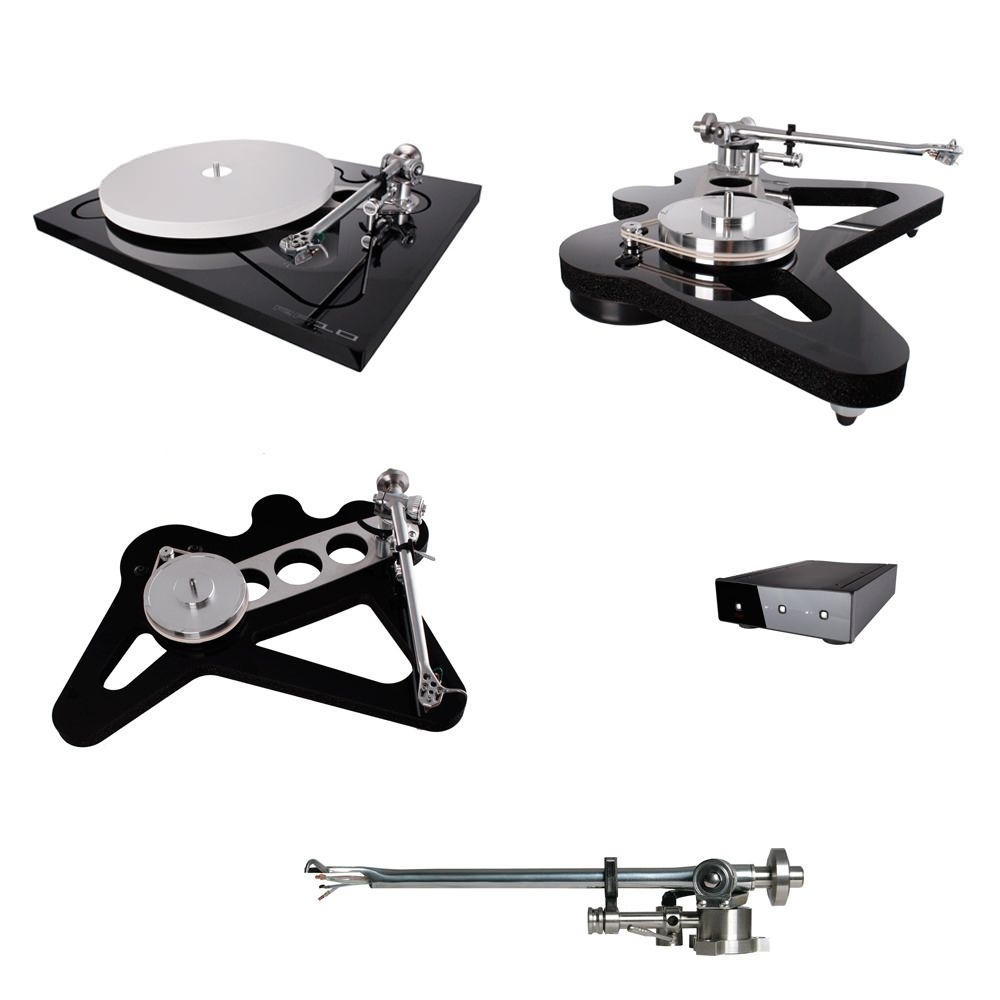
Rega RP10
The Apheta 2 is available as a factory-installed option on the RP10, for $6495 or with the RP8 at $4195 (you save a whopping $800 on the cartridge when packaged with either ‘table) and will be offered at separately at $1895.
Back to the RP-10 for a moment; For those of you looking for a simple, straightforward way to play vinyl at a very high level, you can’t beat the combination of the RP10/Apheta 2 - our customers love it. This pairing takes Rega to new heights, elevating performance way beyond anything they’ve offered before. There are characteristic limitations I thought were intrinsic to all Rega designs that have been virtually eliminated in the RP10. How much of the performance is a synergy between cartridge and ‘table I can’t say (we’ve only sold the RP10 with the Apheta), but whatever the reason I can highly recommend this rig.
CARDAS: Introduced at CES, the latest addition to their Clear family of products, the Clear Reflection harkens back to the days when Cardas was known for a lush midrange and slightly warm overall presentation, while seeking to add some of the newfound transparency of the Clear. According to Cardas: “Clear Reflection cables combine the best of the traditional Cardas sound – think Golden Reference – with the added dynamics and imaging from the Clear cable line.”
For some long-time Cardas fans, the Clear line has been a bit “too clear,” missing the richness in the midrange that they had become accustomed to. Those folks will surely appreciate this blending of the old and the new for an overall balance that might be “just right” for your system. Interconnects go for $1150, 1M and a pair of 2M speaker cables fetch $2450 (so less than Clear and a bit more than Clear Light).
NU PRIME: The high-end division of NuForce has broken away from the parent company to become an entity unto itself, now known as NuPrime. Though I missed their suite (not sure how, but CES can be a crazy place!), the company debuted several new offerings. Their ST-10 stereo power amplifier is rated at 150Wpc into 8 Ohms, and features a new generation of the topology made popular in past NuForce high-end models. The new circuit has shorter pathways and a lower noise floor and is said to provide near reference-class performance. The ST-10 is available now for $1595.
NuPrime also unveiled the new DAC-10 and DAC-10H. Both offer preamp function but the “H” model adds a headphone amplifier with balanced topology. The DACs both feature the latest ESS Sabre32 Reference ES9018 DAC chip and offer USB, coaxial, optical, and analog inputs. Sampling rates up to 384kHz are supported over USB, while rates up to 192kHz are supported for the remaining inputs. The USB input on each will also accept native DSD up to 11.2MHz (DSD256). The DAC-10 is priced at $1495 and the DAC-10H at $1795, and both are available now.
CLEARAUDIO: Clearaudio introduced their new fully automatic (though it can also be manually cycled) Double Matrix Pro S vacuum record cleaning machine The “S” stands for sonic as the new machine uses vibrating cleaning pads to gently dislodge debris and is said to be as effective as ultrasonic cleaners. It’s a beautifully made machine (as are all products from Clearaudio) and is loaded with nice features such as an antistatic brush assembly and LED indicators of fluid level. Price is $5500.
CREEK: Creek introduced their latest integrated amplifier, the Evolution 100A. The 100A is their most powerful creation to date producing a stout 110 watts per channel into 8 Ohms and 170 into 4 Ohms with a maximum peak current output of 26 Amps. Using a unique circuit design Creek has crafted an exceptionally powerful amplifier topology with very low output impedance and high output current capability. This combination provides exceptional speed and control suitable for driving most any loudspeaker.
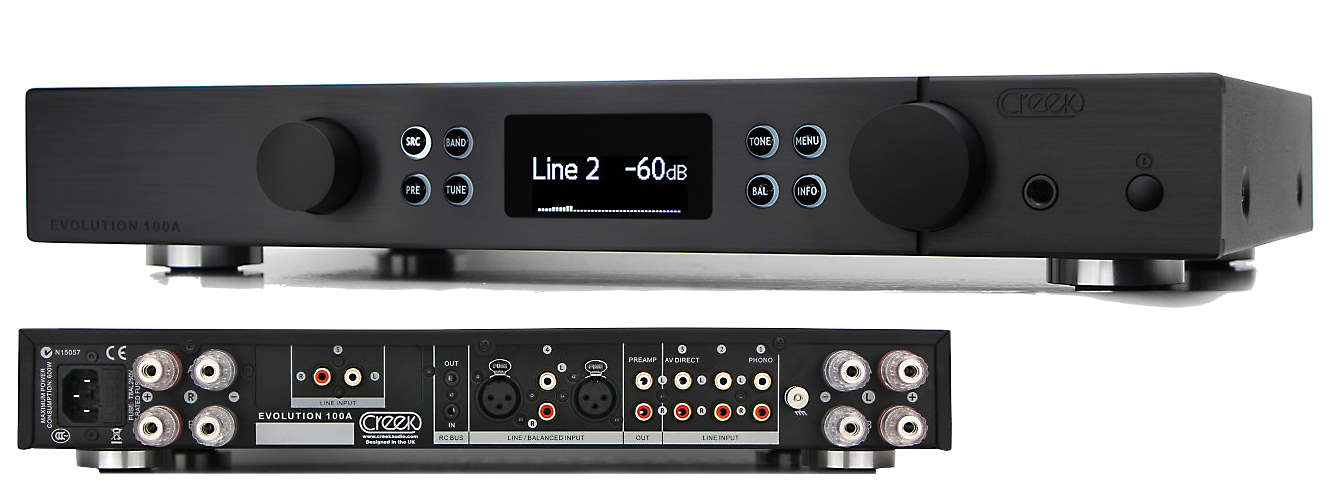
Creek Evolution 100
Creek Audio has taken the unusual step of driving the headphone output socket of their Evolution amplifiers from a dedicated low impedance source. Instead of the headphone output being sourced from the power amplifier, the headphone output is derived from a dedicated amplifier, with only a few Ohms in series for protection against short circuits. This dedicated HP amp is now located on the pre-amplifier circuit board.
Optional plug-in modules further enhance flexibility and include a 24/292 DAC module (4 x SPDIF, 1 x USB 24/96) for $599, phono and even one with an FM tuner for $250 is forthcoming. Evolution 100A is $2195.
ZESTO: One of our manufacturers who were not officially displaying at CES was Zesto Audio, so I was pleased to run into the gracious husband and wife team of Carolyn and George Counnas while roaming the hallways. Their company not only produces some absolutely awesome gear, but their friendly and responsive customer service makes customers feel like part of their family.
We’ve been very impressed with the new Andros 1.2 phono stage and feel it represents a nice step forward from its well-reviewed predecessor. Some of the upgrades add convenience and flexibility while others are performance oriented enhancements. Price for the Andros 1.2 is $4699.
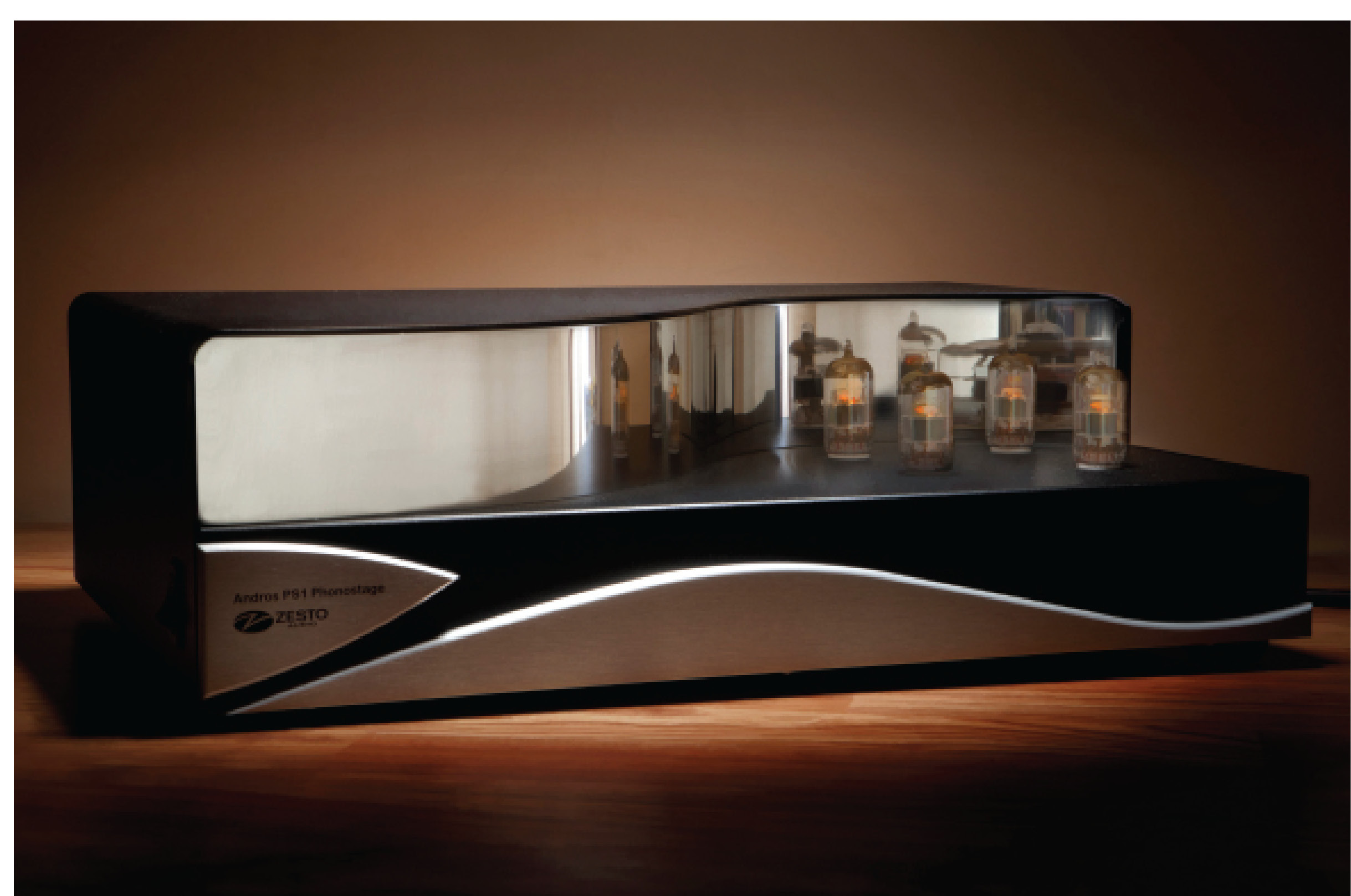
Zesto Andros 1.2
Current owners need not feel left out as upgrades are available. The cost is $1000 for Andros units one year of age or newer and $1500 for earlier units. The upgrade includes an all new rear panel and circuit board, connectors and transformers along with a new front logo and serial number. A full two year factory warranty is included with the factory upgrade.
The 1.2 offers the following upgrades:
10 position MC load, from 20 to 1000 Ohm and more positions in the sweet zone between 200 to 1000 Ohms
2 position MM loading, 47K &15K to accommodate a wider range of cartridges
67dB of gain
+6V max output
Same sonic signature
Improved circuitry design and component value upgrades
Enhanced grounding scheme
Binding post moved to accommodate shorter ground wires
Lower noise
New feet
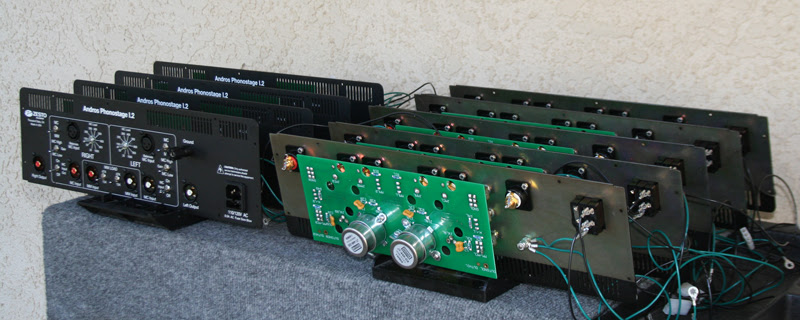
Zesto Andros 1.2 Upgrade Boards

Winder 2015
BRYSTON: The system in the Bryston suite employed their outstanding BDP-2 digital music player partnered with the BDA-2 DAC feeding a BP26/MPS preamp and a pair of 7BSST2 amps driving their Mini T loudspeakers. The power and extension for this system was impressive. In particular, bass from this mid-sized bookshelf design was amazing, both in terms of its depth and alacrity. Their speaker line has been quietly gaining momentum and is a strong contender in the price ranges they occupy ($3195 - $7495 for standard finishes).
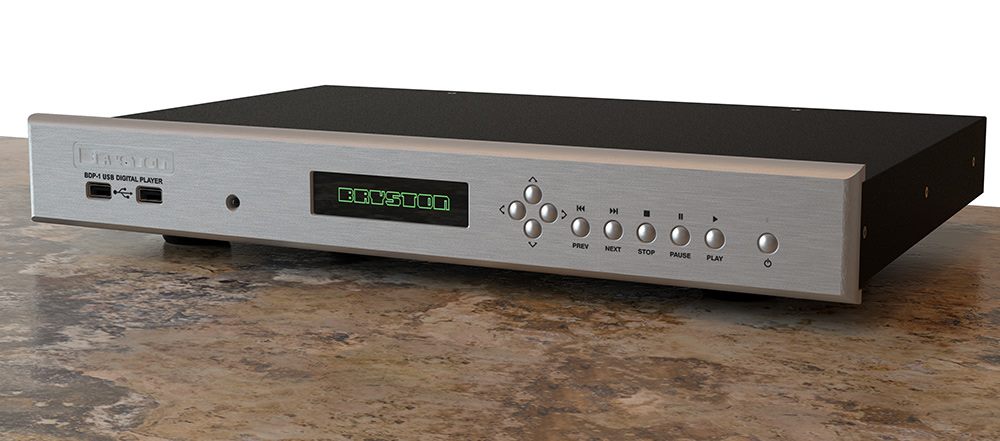
Bryston BDP-1 USB
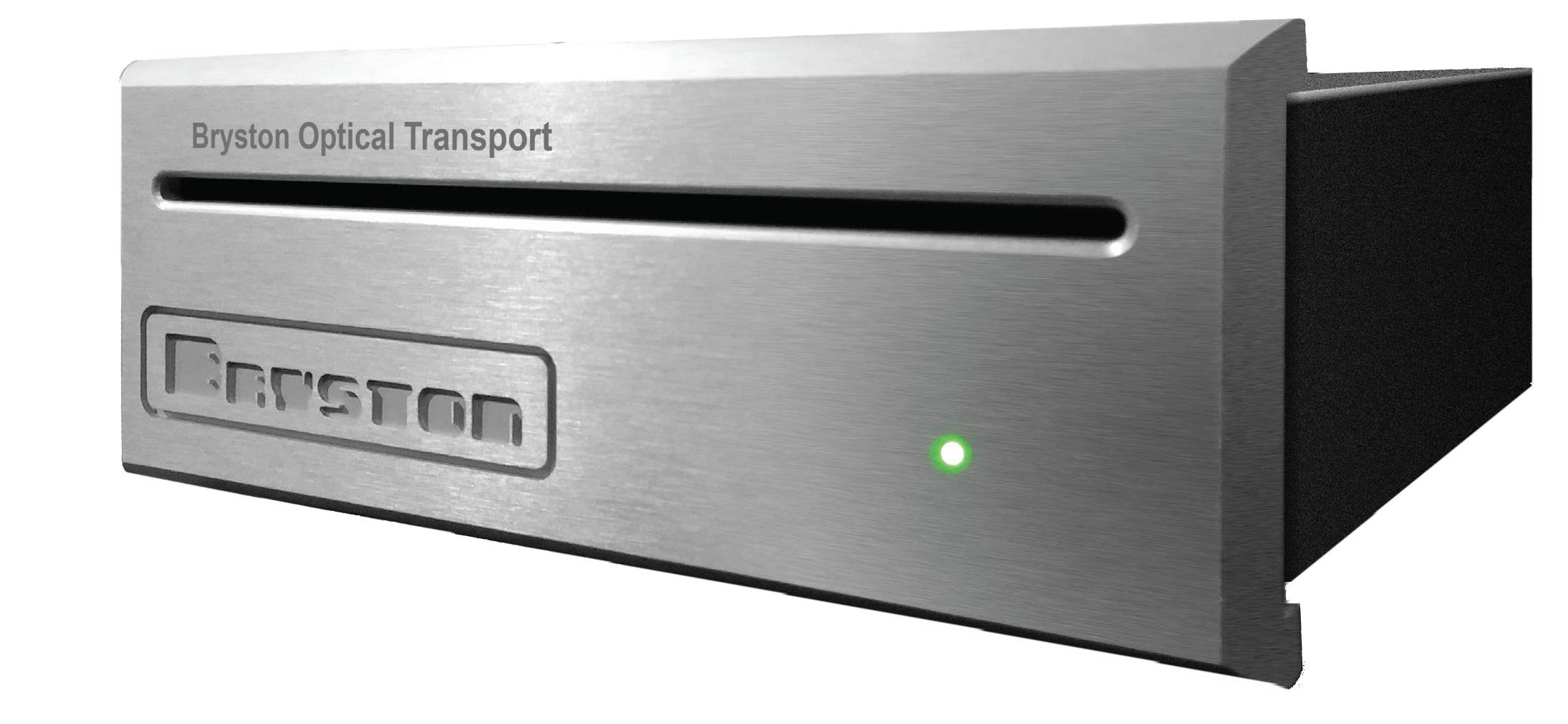
Bryston BOT-1
2015 will be a big year for Bryston digital audio. Their BDP-1USB ($1995) digital music player is now shipping and they have announced the BDA-3 DAC ($3195, spring availability), which is packed with features like stereo HDMI input and native DSD. The forthcoming BOT-1 is an optical drive built especially for their digital music players and adds the ability for you to rip CDs directly to your BDP, or to play CDs with Bryston BDP quality.
ESOTERIC: Esoteric was on hand showing the entire range of their flagship Grandioso Series of components. Gorgeous cosmetics and equally engaging sound quality; the Grandioso is feast for both the eyes and ears.
There is now a full range of product available in this series including amplification and preamplification to partner the state of the art P1 Transport and D1 Digital to Analog Converter.
The balance of the Esoteric line was also displayed. If you are considering a truly state of the CD/SACD player (or separates) you simply must make Esoteric the first entry on your short list. Their 50+ year’s heritage of building high quality, reliable product is reassuring to say the least.
MUSICAL SURROUNDINGS: The hugely successful Phonomena II phono preamp by Michael Yee has been upgraded. The new Phonomena II + model features an all new circuit board layout and fully dual mono topology. The totally discrete design eschews conventional op-amp circuits, allowing greater flexibility in circuit design and offers a higher level of performance.
The Phonomena II+ offers exceptional adjustability offering thirteen gain setting and seventeen resistive loading options, all easily accessible on rear-mounted switches. The Phonomena II+ is made right in the USA and a bargain at just $750. Available in satin silver or black.
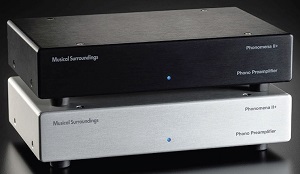
Musical Surroundings Phonoema II +
TIDAL: The first CD quality streaming service is now available in the US. Unlike other streaming services that offer a maximum bitrate of 320kbps, just decent MP3 quality, TIDAL streams full resolution, CD quality music at 1411kbps (and now about 75,000 HD music videos as well).
I’ve been enjoying the service now for several weeks and can say that I am impressed with the sound quality, and having access to over twenty-five million tracks is pretty cool. I have been able to discover and sample a huge range of music that I would have never discovered. The cost is modest at just $19.99 per month, the price of just a couple of CDs. You can read more about the service here: https://tidalhifi.com/us/campaign/audio and there is a video interview online with Tidal’s Pal Bratelund by Andy Clough of What HiFi that you can view here: http://www.whathifi.com/news/ces-2015-tidal-to-launch-high-res-streaming-service-using-meridian-mqa
With the advent of high resolution file availability, Tidal is moving in the direction of offering hi-res streaming as well.
Aurender (makers of state of the art servers and streamers) have taken note of TIDAL’s popularity and worked together with the company to integrate the TIDAL music service into their control app. Aurender owners who subscribe to TIDAL will be able to access the streaming service from within their Aurender app and decode the stream through the DAC being used with the Aurender. Very cool!
Eric , one of the tech wizards at Aurender, gave me a demonstration of the beta version of the new app that includes the TIDAL feature, and it was really slick. Aurender will be providing the app upgrade free of charge in the next month or two.
VPI: We had hoped to bring you a full report on the new Prime and Scout Jr. turntables, but they did not arrive in time. We hope to see them soon. There’s still time to take advantage of our special pre-order pricing!
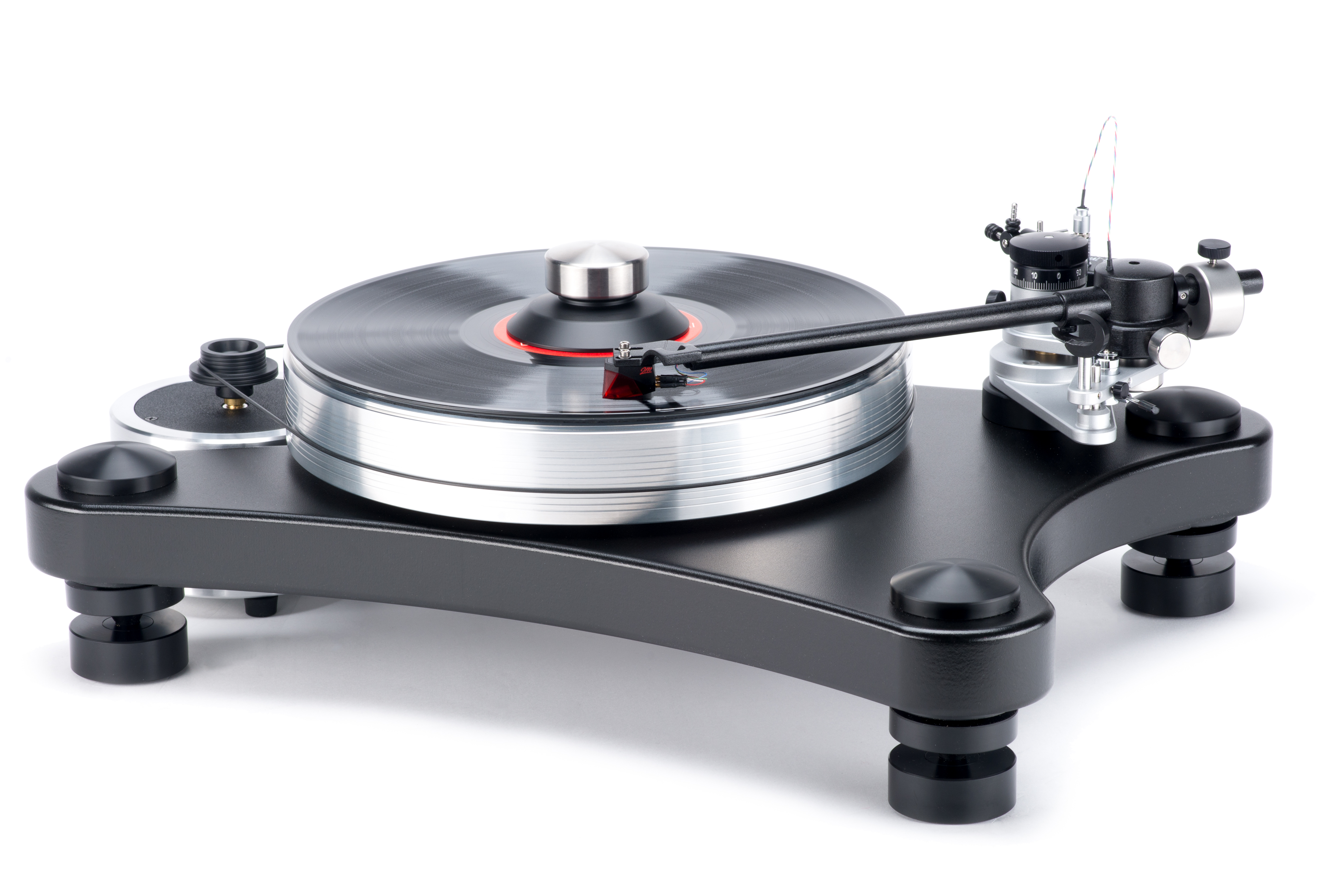
VPI Prime Turntable with 10.5 3D Tonearm
VPI has posted a set-up video for the Prime, which will at least give you a good look at the ‘table, and prepare you for assembly if you have one on order. We still have a couple unspoken for out of our first to arrive batch, so call us if you’d like to take advantage. https://www.youtube.com/watch?v=VfJnMtolAWo



